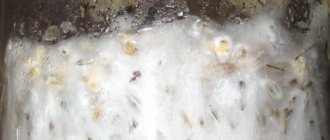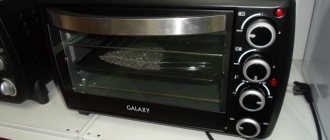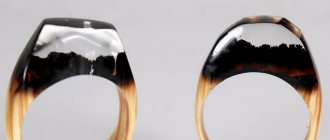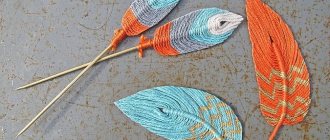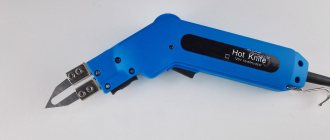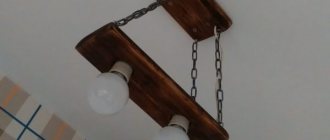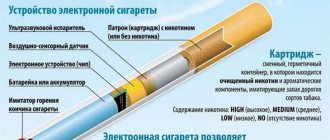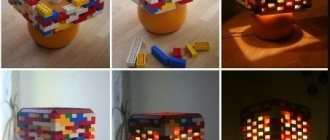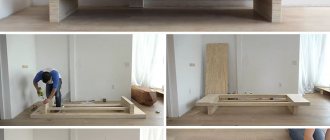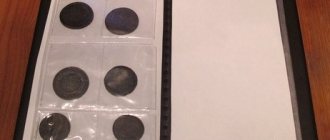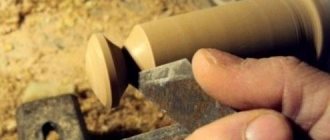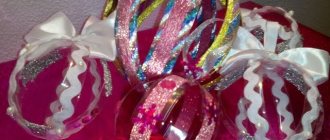Incandescent lamps have long outlived their usefulness, and they have been replaced by various energy-saving technologies. Even at the state level, since 2009, a restriction has been introduced on the maximum permissible power of Ilyich lamps - no more than 100 W, in order to reduce energy consumption in the household segment. The only stumbling block in the mass use of energy-saving lamps is their price. Therefore, as an alternative, we will look at how to make an LED lamp with your own hands from available funds.
Idea N1 – Halogen to the rescue
The simplest option is not to reinvent the wheel from scratch, but to use an old or burnt-out lighting lamp as a base. Among the wide variety of lighting equipment, halogen light bulbs are quite common. In everyday life, their models with G and GU pin bases are especially popular, so we will look at the manufacture of an LED lamp using the example of such a lamp.
To work you will need the following elements:
- LEDs provide luminous flux; the power of a homemade light bulb will depend on their technical characteristics. For these purposes, it is desirable to have identical LED elements, as this will simplify the calculation and the principle of their connection.
- Resistors - in case you need to limit the current in the circuit of LED parts, but you can do without them if the resistance of the LEDs is sufficient for the selected connection scheme.
- Glue , sealant or other material for securing LED elements.
- Connecting wires , base for fixing LEDs in an LED light bulb.
- Bench tools (screwdrivers, hammer, pliers), soldering iron for electrical connection of LED and resistive parts.
When choosing the number of LEDs in a lamp, initially draw up a layout diagram on the plate, then choose the method of connecting them - serial or series-parallel. A parallel circuit for a homemade LED lamp can only be selected if each part is designed for 12 V or you limit the voltage for each of them using a resistor.
You can come up with a layout diagram for the future lamp yourself, or you can use the standard form:
Rice. 1: LED layout
The manufacturing process of an LED light bulb will consist of the following steps:
- Using a screwdriver, remove the sealant from the pins of the old lamp base and knock them out with a hammer or pliers.
Rice.
2. Remove the sealant from the terminals. It is important not to overdo it so as not to break the case.
- Prepare a base for the LEDs; textolite, getinax, electric cardboard are suitable, paper glued to an aluminum sheet will also work. Cut a circle of suitable diameter according to the internal dimensions of the halogen lighting fixture.
Rice. 3: Prepare the base for the LEDs
- In accordance with the chosen layout, make holes in the base; for this you can use a die cutter, hole punch or knife.
- Install the LEDs into the holes on the base and secure them with glue.
Rice. 4. Fix the LEDs to the base
- Solder the LED elements in the lamp in such a way that the current flowing through each of them or a separate group does not exceed the permissible value. You can arrange them into groups at your discretion; to limit the current, you can install a resistor in the circuit. When soldering, be sure to observe the polarity of the leads.
Rice. 5. Solder according to the chosen pattern
- Solder two pieces of copper wire to the resulting terminals from the “+” and “-” semiconductor elements. It is not allowed to connect them with twists in accordance with clause 2.1.21 of the PUE .
- Upon completion of soldering, it is advisable to cover or fill the legs and joints with glue; it will act as a dielectric of the new lamp.
- Install the disk with LED elements into the light bulb housing.
Rice.
6. Install the disk into the housing. Glue it around the perimeter to secure it to the reflector. Now you have a ready-made assembled device in your hands, do not forget to mark the terminals.
However, please note that you cannot connect the lamp directly to a 220 Volt network, since the device will be designed for 12 V.
Lush balls
This homemade lamp will perfectly decorate a child’s room or kitchen, creating a soft, pleasant glow. It can be made in any color palette at your discretion.
To work, you need to prepare glue, colored paper and a Chinese lantern (they are now sold in many stores). Instead of paper, you can use loose fabric.
Cut out circles of the same size from paper (fabric) and cover the flashlight with them. The parts must be glued overlapping, starting from the bottom - creating a semblance of scales.
Photo: remont-bil.ru
Photo: ars.ru
Idea N2 – From an energy-saving light bulb
Fluorescent lamps also belong to the energy-saving category, but they contain toxic mercury, the vapors of which are dangerous to humans. Unfortunately, it is the bulb that is the weak point of these energy-saving light bulbs. As a result of depressurization of the tube, the gas mixture comes out, and the lighting device of the fluorescent lamp becomes unusable. However, even a novice electrician can convert it into a diode light bulb.
To do this, you will need a compact fluorescent lamp that has failed, several LEDs and a driver for them. The easiest way is to take a driver from an LED lamp, but if you don’t have one on hand, you can make it yourself. The simplest way to make a driver is to assemble a circuit from an input capacitor, resistors and a bridge, shown in the diagram below:
Rice. 7. Lamp driver circuit
The process will consist of the following steps:
- Disassemble the CFL, but do so outdoors to prevent mercury vapor from entering the room.
Rice.
8: disassemble the fluorescent lamp Many models are made cast, so they will have to be sawed.
- Remove the remains of the compact fluorescent bulb, the top part of the plastic and the electronic unit from the case. You should still have a base with leads and a plastic case.
Rice. 9. Remove the electronic unit from the housing
- Then, make a disk with LED elements according to the dimensions of the inner hole of the fluorescent light bulb. The execution procedure is given in the description of the previous idea.
- Solder a ready-made or home-made driver into the case; its dimensions should be hidden enough so that it can be easily covered by the disk.
Rice. 10. Solder a homemade driver
- Solder and fix the disk with LEDs with glue - your homemade lamp is ready.
Rice.
11. Solder the disk to the driver and install it in the case. You can already connect this version of the LED lamp directly to a 220 V network.
Making lampshades with a wire frame
So, there is a frame, you can think about what to dress it up with. The first thing that comes to mind is new textile clothing.
Fabric lampshades
To make fabric lampshades, you do not need to have a sewing machine or know how to sew. But you will have to make a pattern in any case. What you need is a sheet of newspaper or whatman paper, scissors and tape.
Step 1. The newspaper is wrapped around the frame, the joint is secured with tape and the excess is cut off from the top and bottom. Then the paper cap is cut lengthwise and the pattern is transferred to the fabric, leaving allowances for the hems.
Pattern
Step 2. The edges of the workpiece are folded inward and ironed. Its dimensions after this operation should remain slightly larger than the newspaper pattern.
Frame and blank
Step 3. Wrap the fabric around the frame and glue the seam or carefully sew it with a needle and thread. We wrap the edges at the top and bottom inward and glue them to the frame.
The fabric is stretched over the frame
With tailoring skills, you can make a lampshade of a more voluminous shape. And you don’t have to be tricky with the pattern. You need to cut a rectangle out of fabric according to the height of the frame and the length of the largest circle. This is usually the bottom circle of the frame. Of course, don't forget about seam allowances.
We sew the fabric from the wrong side with the short sides to form a cylinder, the diameter of which exactly matches the diameter of the lower part of the frame. Then we bend and stitch the bottom edge and put the fabric cylinder on the lampshade. We assemble its upper part in uniform folds, temporarily securing them with pins, bend them onto the upper circle of the frame and glue them. All that remains is to sew a braid or lace strip to the bottom edge and tie the lampshade with a ribbon.
Fabric lampshade
You can also insert an elastic band into the upper part of the fabric cylinder - the appearance of the lampshade will be completely different.
Lampshade from an old knitted skirt. Elastic band inserted on top
In the end, you can simply put a children's skirt of a suitable length on the old frame. It can be sewn from any fabric - calico, knitwear, jeans, organza, etc. The main thing is that the color and style should be in harmony with the interior of the room.
Lampshade made from jeans
Lampshade made from old jeans
Organza lampshade
Fabric lampshade
Organza lampshade with ribbon decoration
Lampshade made from napkins
Crocheted napkins and capes now seem to many to be completely unnecessary, old-fashioned things. Well, or simply not applicable in the interior of an apartment for its intended purpose. But it’s a pity to throw away items knitted by your mother or grandmother. But you can make a lampshade out of them, similar to a fabric one. Only first, all the napkins will have to be sewn into one fabric, the shape and size suitable for covering the frame.
Lace lampshade
Advice. To prevent the metal frame from being noticeable through the openwork fabric, paint it, wrap it with tape of a suitable color, or cover it with paper/cardboard, creating a hard inner layer.
Lampshade made from lace doilies
A table lamp with such a lampshade will fit perfectly into a girl's bedroom in the Provence style.
Combination of fabric and lace
Lampshade lace with beads
Lampshade made of stripes and ribbons
Compare these two photos.
Lampshade made of stripes and ribbons
The same fabric is used here, but different finishing techniques. And the second lampshade looks more elegant, richer. The secret is in using not a whole cloth, but strips cut from the fabric and creating the effect of folds.
| Image | Description |
| Step 1 | You need to prepare a frame, thread and needle, scissors and durable fabric that does not fray around the edges. |
Step 2 | The fabric needs to be cut into long strips 3-4 cm wide. Things will go faster if you simply cut it from the edge and tear it with a sharp movement. |
Step 3 | The resulting strips are smoothed with an iron. If desired, you can fold the edges and press them inward, but this is not necessary. Simply trim off any loose threads. |
| Step 4 | The first strip is secured to the top of the frame using glue or thread. |
Step 5 | And they begin to carefully wrap the frame in a circle, alternately wrapping the strip around the lower and upper ring. In this case, it needs to be stretched and laid with a slight overlap on the previous layer. Then the next one is hemmed to the first strip, trying to ensure that the seam is on the wrong side of the lampshade. |
Step 6 | Having wrapped the entire frame, the tip of the fabric strip is hemmed from the inside. You can stop there - the lampshade already looks very attractive. Or you can make the edging with contrasting fabric. |
Step 7 | A strip of this fabric 12-15 cm wide is folded on one side, the fold is ironed and double-sided tape is glued to it. |
Step 8 | With the other side of the tape, the strip is glued to the edge of the lampshade and tucked inward. The tape must be glued on both sides, so it is bent along the axis. |
| Step 9 | The other edge is finished in the same way, and the excess fabric is carefully trimmed with scissors. |
Instead of one fabric, you can use different ones, alternating stripes by color and width. It’s even more convenient to use ribbons - you don’t need to sew them.
Lampshade made of ribbons with bows
Alternatively, strips or ribbons of different colors are not sewn together, but the ends are left to hang down freely.
The ribbons are sewn only along the top edge
Ribbons and fabric strips are excellent materials for weaving. Having made the base according to the method described above, it can be intertwined with transverse or diagonal lines.
How to make a lampshade from ribbons with your own hands
Lampshades made from braid, yarn, and twine look very original. If the frame has many intersecting ribs, they can be wrapped in different directions.
Decorative lampshade made of twine
Jute Filigree for Beginners: Basic Principles
DIY twine lampshade
Lampshade with convex ornament
If a smooth fabric lampshade you have or made yourself is satisfactory in all respects, but lacks some zest, you can always decorate it. Beads, rhinestones, paper flowers and butterflies, fringe, etc. But there is a more original and effective way to decorate lampshades... with wood putty. It is best to use ready-made polymer putty. It comes in white and the color of different types of wood. White is perfectly tinted in any shade.
Lampshade with convex ornament
The technology is extremely simple: a flexible stencil is glued to the lampshade using tape, and then an even layer of putty is applied to it. After it dries, the stencil along with the tape is carefully removed along with the excess putty.
Master class on making a lampshade with a convex pattern
Idea N3 – Using LED strip
Another way to obtain an LED light bulb at home is to assemble a lamp from LED strips. By its design, the LED strip is a universal lighting device - it can be mounted on almost any surface. Therefore, the role of an LED chandelier with such bulbs can be played by any design.
However, diode strips also have a significant drawback - to power indoor models, a safe voltage of 12 V is used, which meets the requirements of clause 1.7.50 of the PUE . To implement such power supply, it is necessary to install a separate power supply. The dimensions of such a converter are quite impressive, so this idea is relevant to implement in those places where it can be hidden, for example, in a niche in a suspended ceiling.
- Determine the required length of the LED strip for the lamp based on the required lighting brightness. As a rule, for each model this parameter is indicated in the passport data.
- Select a power supply with sufficient power to connect the selected length of tape.
- Cut the LED strip into pieces according to the marks marked on it. It is most convenient to choose the length of the segments to a minimum (3 - 4 LEDs), they are easy to stick on any part.
Rice. 12. Cut the LED strip
- Cut the plastic pipe into pieces and glue the LED strip onto it.
Rice. 13. Cut the plastic pipe into pieces and apply tape
- Solder the resulting sections in parallel, several pieces for one lamp.
Rice. 14. Solder the required number of pieces of tape
- Connect the leads from the LED strip to the base; you can take them from an old incandescent or fluorescent light bulb, or connect directly to the power supply.
Rice.
15. Connect the lamp to the socket. Now you have an assembled lamp from an LED strip, which will fully replace a store-bought lamp. However, note that there are bare contacts on it, so when installing the lamp in a lamp or niche, the circuit must be de-energized.
Globe lamp
A wonderful homemade lampshade for a children's room can be made from a very ordinary globe. Cut it in half into two equal hemispheres. Make a small hole in the upper part of one half, insert a socket with a light bulb and holder. The chandelier is ready!
After installing the cartridge, you can glue the two halves back together, resulting in a glowing ball. A more creative option is to make small holes in the globe, “outlining” the contours of the continents. Such a lamp will bring a lot of pleasure to the child and will help in studying geography.
Photo: domnomore.com
Photo: braccialini-bags.ru
Photo: realestate.com.au
Idea N4 – From LEDs
This method is suitable if you have a ready-made lighting device or at least a frame for it. As an example, you can take a table lamp, sconce or ceiling chandelier. To make it, you will need an LED or an assembly of several units, a cooling radiator and a power supply for a mobile phone.
Rice. 16. LED module and heatsink
It should be noted that the LED elements are selected according to the power of the power supply, if one power supply is not enough, take two.
The LED lamp manufacturing process will consist of the following steps:
- Compare the dimensions of the future lighting device, power supply and radiator; they should fit normally inside the case.
- If necessary, cut the plastic housing of the power supply and remove the board from it.
Rice.
17. Saw the plastic case and remove the board. If there is enough space, leave the case in place, it will act as the main insulation.
- Install the LED assembly onto the cooling radiator and secure it with heat-resistant glue.
Rice.
18. Install the LED assembly onto the cooling radiator. In some models, fixation can be done using a bolted connection.
- Connect the power supply contacts to the LED terminals using a terminal clamp.
Rice. 19. Connect the leads
- Connect the lamp source input to the power supply directly. If you want to replace an old lamp, then connect to the terminals of the base from the old lamp.
Rice.
20. Ready-made LED lamp The homemade LED lamp is ready and can be connected directly to the power circuit.
Dimming with touch switch
In addition to the usual control board, which can only turn the lamp on and off, there are sensors with built-in dimming.
More details
True, we are not talking here about a smooth change in brightness - the longer you hold your hand, the brighter or dimmer the light becomes. No, here the lighting changes in steps.
There can be three brightness levels in total:
- minimum mode
- average
- full heat
These are very convenient to place as night lights on bedside tables. You touch the lamp body several times and the lamp changes the lighting level depending on your needs.
Application of a soft start device
Installation of the device does not require high qualifications. Anyone with a screwdriver and a voltage indicator can handle the installation. In the cable leading to the lamp, a break is made in one - phase or neutral - wire and the device is connected to it. It is best to fasten the wires using terminal blocks, as this guarantees a stable and reliable connection. If it is not possible to use terminal blocks, it is recommended to solder the twists with tin solder.
Operation of the UPVL does not require additional attention. Factory models come with a warranty of up to 3 years. In practice they work much longer.
When assembling the device, one should not forget that high mains voltage can cause harm to human health. Before connecting the wires, you must make sure that there is no current in the lamp power cable.
Therefore, it was decided to design LED lamps ourselves.
The main criterion is cost minimization.
There are two main directions in the development of LED light sources:
1. Use of low-power (up to 0.5 W) LEDs. You need a lot of them, you can configure any shape. No need for a powerful radiator (they heat up little). A significant drawback is more painstaking assembly.
2. Use of powerful (1 W - 5 W) LED elements. Efficiency is high, labor costs are several times less. But point radiation requires the selection of a diffuser, and good radiators are needed to implement the project.
For experimental designs, I chose the first option. The most inexpensive “raw materials”: 5 mm LEDs with a dispersion of 120° in a transparent housing. They are called "straw hats".
Such goodness is sold for 3 rubles a bunch on any radio market.
I bought several packs of 100 pieces. on aliexpress
(link to purchase). It cost a little less than 1 rub. a piece.
As power supplies (more precisely, current sources), I decided to use a proven circuit with a quenching (ballast) capacitor. The advantages of such a driver are extreme low cost and minimal energy consumption. Since there is no PWM controller or linear current stabilizer, excess energy does not go into the atmosphere: in this circuit there are no elements with a heat-dissipating radiator.
Disadvantage: lack of current stabilization. That is, if the mains voltage is unstable, the brightness of the glow will change. My outlet has exactly 220 (+/- 2 volts), so this circuit is just right.
The element base is also not expensive.
- diode bridges of the KTs405A series (any diodes can be used, even Schottky ones)
- film capacitors with a voltage of 630 volts (with a reserve)
- 1-2 watt resistors
- electrolytic capacitors 47 mF at 400 volts (you can take a larger capacity, but this goes beyond the scope of economy)
- little things like a breadboard and fuses are usually in the arsenal of any radio amateur
In order not to invent a housing with an E27 cartridge, we use burnt-out (another reason to abandon them) housekeepers.
After carefully (on the street!) removing the flask with mercury vapor, you are left with an excellent workpiece for creativity.
The basis of the basics is the calculation and principle of operation of a current driver with a quenching capacitor
A typical diagram is shown in the illustration:
How the scheme works:
Resistor R1 limits the current surge when power is applied until the circuit stabilizes (about 1 second). Value from 50 to 150 Ohm. Power 2 W.
Resistor R2 ensures the operation of the ballast capacitor. Firstly, it discharges it when the power is turned off. At a minimum, to prevent you from being shocked when unscrewing the light bulb. The second task is to prevent a current surge in the case when the polarity of the charged capacitor and the first half-wave of 220 volts do not coincide.
Actually, the damping capacitor C1 is the basis of the circuit. It is a kind of current filter. By selecting the capacitance, you can set any current in the circuit. For our diodes it should not exceed 20 mA at peak mains voltage.
LED lamp in a flat ceiling lamp for the kitchen
An ideal donor for such a project. All LEDs will be located in the same plane.
We draw a template and cut out a matrix to accommodate the LED elements. With this diameter, a flat PVC sheet will be deformed. So I used the bottom of a plastic bucket of construction mixtures. There is a stiffening rib along the outer contour.
The diodes are installed using the usual awl: 2 holes according to the markings.
The lamp is designed for 120 LED elements, divided into 2 groups of 60 pieces, for the reliability of the circuit. We make 2 identical drivers.
We mount them on dielectric spacers on the reverse side.
To attach the disk, we install a PVC podium in the center.
We hang the lamp on the ceiling, turn it on - everything works.
To assess the brightness: in the corners there are 4 branded LED lamps from IKEA, with a light output of 400 Lm each.
Where else can it be used?
By the way, the sensor in the form of a ring does not have to be connected directly to the lamp. No one is stopping you from taking him to any other place.
For example, attach a neat metal strip to the bed or bedside table and connect a yellow conductor with a sensor to it.
The wires can be hidden behind the nightstand or under the bed.
In this case, lying on the bed you won’t have to reach for the lamp at all. He touched the bar with his hand and the light came on.
Another use is in bedside wall lamps or sconces (instead of a rope puller).
If you don’t want to spoil the design of the wall with a free-standing square switch, or even forgot to lay wiring under it, a touch mini switch is your solution.
You mount a small box directly inside the lamp and turn it on via touch. In this case, it is enough only to have power for the lamp.
There is no need to trench the walls for electrical wiring for the switch at all!
The advantage of DIY lamps
Table lamps are now expensive, especially if you need a certain size, color, etc. To buy the right option, you will have to spend time searching at several retail outlets. To save not only money, but also time, you can make a table lamp with your own hands.
In addition to such savings, there are also a number of advantages:
- The required size is set independently, which depends on the location of the device and the allocated space;
- Individuality, because it is very difficult to make two identical lamps with your own hands; small details will differ.
